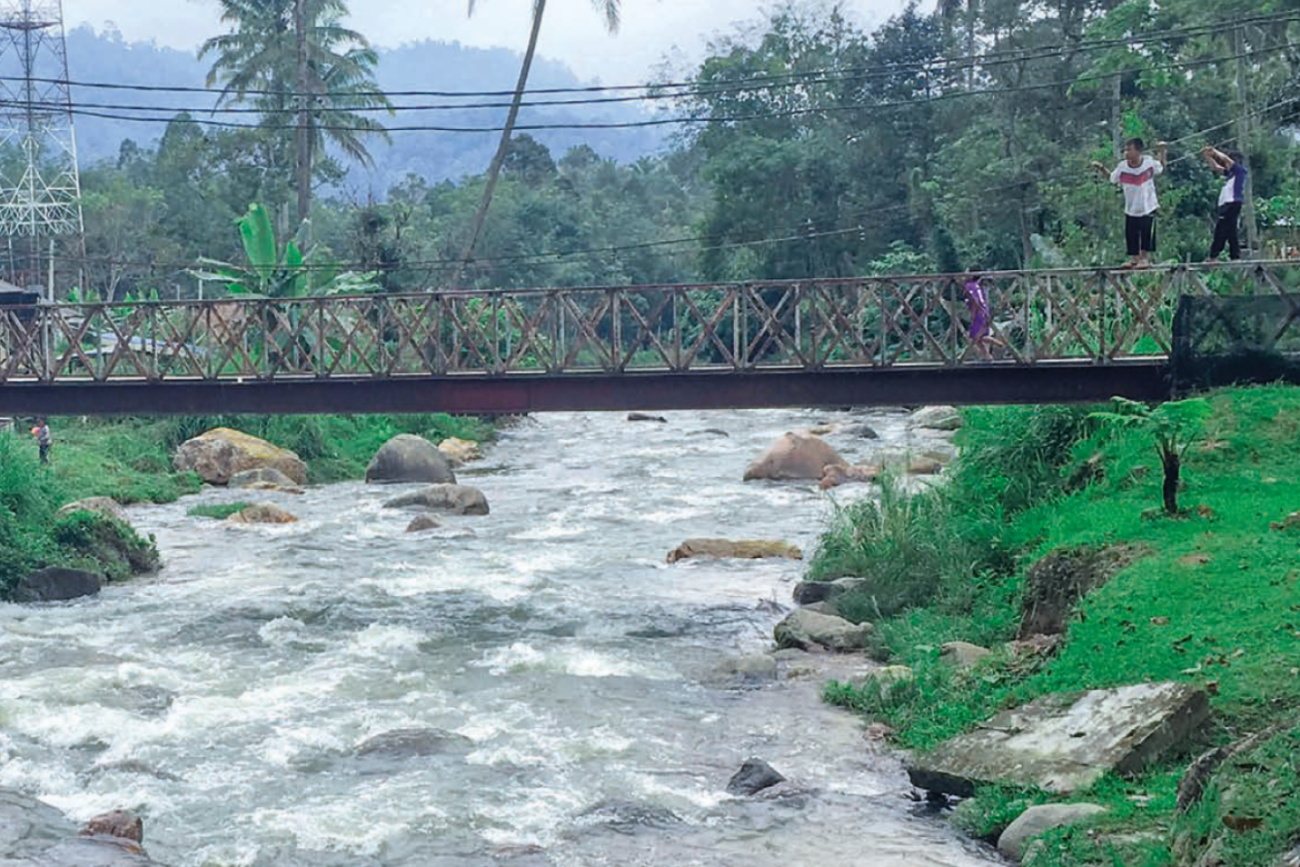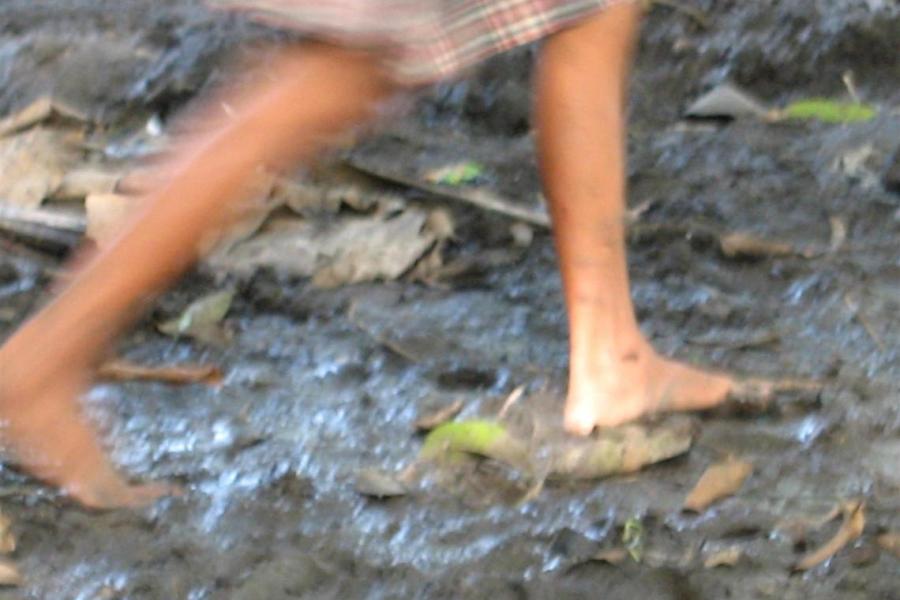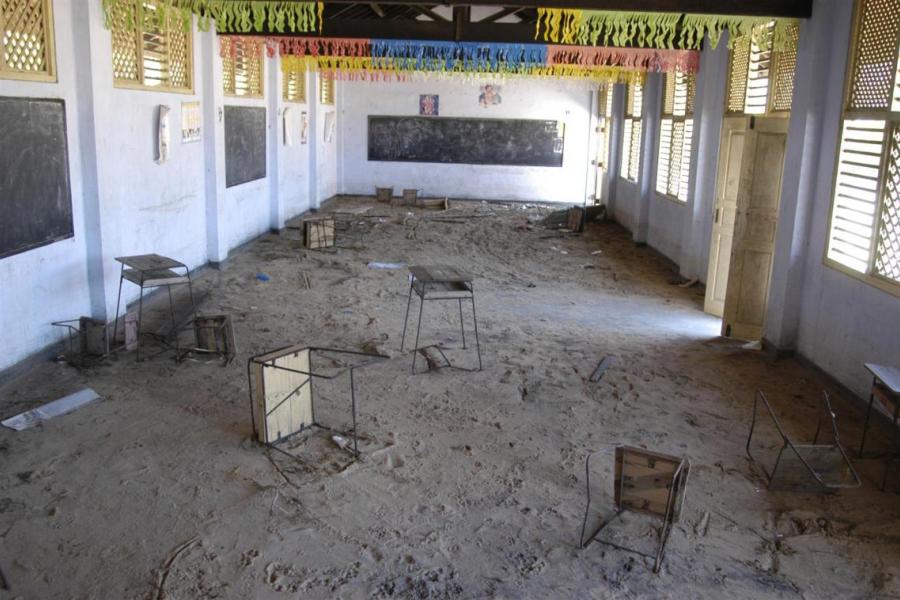Empower a child with education

Climate change is getting in the way of our children learning
A rainy morning might feel like the perfect time to sleep in, but it can also rob some families of the opportunity to go to work or to school. Here, in the third of a three-part series, we look at why children’s futures are in jeopardy when climate change disrupts their education.
Jasmin Irisha Jim Ilham, Climate and Environment Consultant, UNICEF Malaysia
“Most Orang Asli only have a motorcycle,” says one of the villagers at Pos Kuala Mu, an Orang Asli village in Perak. “So when it rains heavily, they can’t send their children [to school]. Those who live far from school stay at the hostel, but they go back home during the weekend and come back on a Sunday. If it rains heavily on Sunday, there will not be many students on Monday,”
Climate change has brought about extreme weather patterns such as heavy rains to areas like Pos Kuala Mu, along with the threat of landslides and flash floods. When there is a landslide, the village’s only access road is cut off. The villagers must rely on government agencies to deliver or drop off fresh food supplies; and the children cannot get to school. The water level in the river that runs through the village also rises, making crossing the river dangerous.
Missed opportunity for learning
“A couple of missed days at school is not a big deal, but when it becomes a regular occurrence, the children really miss out on a lot of their educational development,” says Universiti Kebangsaan Malaysia’s Professor Dr Hidayatulfathi Othman, a co-researcher on the team that carried out the study ‘Impact of Climate Change on Children: A Malaysian Perspective’.
“They also face other hurdles, such as distance. The secondary school in Pos Kuala Mu is a long trek to the bottom of the hills. When there are so many obstacles, it is hard to ensure that students stay in school,” she says.
On Pulau Gaya, an island off the coast of Sabah, children make a daily commute to school by boat. During the rainy season, strong winds and rough seas make this boat ride dangerous. Many parents keep their children home out of fear for their safety.
“More than half the students stop going to classes during this time,” says Professor Hidayatulfathi. “On top of this, when it’s raining, there are fewer boats plying the transport routes. This means that the teachers who teach at schools on the island but live on the mainland also find it difficult to make the 15-minute boat ride to get to their classes and students.”
On the flipside, with temperatures rising on hot days, the quality of the learning experience declines because children find it hard to focus in the heat. “Teachers on Pulau Gaya have observed their students getting listless or restless in the heat. With climate change slowly increasing our temperatures, this means hotter classrooms, and poorer concentration,” adds Professor Hidayatulfathi.
Domino effect of parents’ income on young children
Very often, the rainy season affects parents’ incomes in places like Pos Kuala Mu and Pulau Gaya where economic activities are climate-sensitive. For example, many families rely on farming and rubber tapping at Pos Kuala Mu, while on Pulau Gaya, most are fishermen. Extreme weather events cause these activities to grind to a halt and during these times, families have little to survive on.
This is where the domino effect starts. “When parents struggle, children do too. When parents are not making enough money, children are roped in to help earn and this causes them to start missing school,” says Professor Hidayatulfathi.
Teachers on Pulau Gaya have students who consistently miss school on Mondays because they were busy helping out parents over the weekends. “They are tired when the weekend is over,” explains Professor Hidayatulfathi.
When a student regularly misses classes, a school representative visits the student’s home to find out if the family is having problems and to try to find solutions together with the family. According to the research team, the teachers do not penalise the students for missing school as they understand that students need to juggle between helping the family and attending classes.
“While everyone is doing their best to balance these needs, the harsh reality is that children are stuck in a cycle that will continue for generations because they are unable to gain the education they need to access better opportunities,” says Professor Hidayatulfathi.
Not just a rural problem
Those living in urban areas are not spared. In PPR Sungai Bonus, a low-cost housing project in Kuala Lumpur, residents working as Grab drivers saw decreased income during the rainy season as fewer people ventured outdoors.
“I work as a Grab driver, so during heavy rain with the storm and lightning…who wants to go out? Who wants to take the risk? This affects our income,” a parent living at PPR Sungai Bonus said.
When families are struggling with economic and social difficulties, education becomes a low priority. The focus is on the here-and-now issues of putting food on the table and ensuring there is a roof above heads.
At PPR Sungai Bonus, it was also noticeable that youths whose families did not have a stable source of income were at greater risk of being involved with drugs and petty theft. “The indirect knock-on effects of climate change are really putting our children at a disadvantage,” says Professor Hidayatulfathi.

We can be game changers
How do we ensure that we can teach our children the skills that will give them the opportunity to improve their futures?
First of all, the education sector needs to be climate-smart. It is through education that children can first be made aware of climate change. This will give them the ability to adapt and cope with the effects of climate change and environmental degradation. It is also education that can empower them to be a part of positive climate action.
Currently, the curriculum in schools does not formally include subjects on climate change and the environment. Substantive educational materials on such subjects should be developed for students. These should then be included in the curriculum and the Malaysian Education Blueprints.
It is important to note that when researching these materials, data collected should be detailed and disaggregated. This will help to ensure that content can be developed to meet the needs of specific groups, for example children from marginalised communities.
Training modules will also have to be developed for teachers, who will need additional support to advance their own knowledge of climate change and its effects, especially on local communities.
With so much to be done, it is important not to reinvent the wheel. Where possible, the government and the private sector should come together to share ready solutions. For example, climate-smart educational materials and training modules that exist in private education systems can be used to form a basis for local school curricula.
But it is not only the content or curriculum that needs to be climate-smart. We must look at ways to make infrastructure adaptive to climate as well. “If a school building is damaged because of storms and floods, children can’t get to class. If classrooms are heat traps, children can’t focus. In order for children to reap the benefits of school, schools need to remain open and be conducive for learning,” says Professor Hidayatulfathi.
Besides this, alternative methods of delivering education should be developed to minimise disruption in teaching and learning during periods of environmental and climate stress. For example, we can learn much from the progress of online learning during the COVID-19 pandemic. This is something that can be evaluated and adapted into a climate-smart education ecosystem.
Professor Hidayatulfathi urges all Malaysians to “be the game changer.” She quotes Paul Polman, a Dutch businessman and climate change activist: “Climate change is sometimes misunderstood as being about changes in the weather. In reality, it is about changes in our very way of life.”
—-----
‘Impact of Climate Change on Children: A Malaysian Perspective’ was a study conducted by Universiti Kebangsaan Malaysia (UKM), in collaboration with UNICEF and Universiti Malaysia Sabah (UMS). This is the first study that addresses children as an especially vulnerable group vis-a-vis the impact of climate change and environmental degradation in the country. The report was launched on 29 October 2021 in the lead-up to COP26. The full report is available on the UNICEF Malaysia website at https://unicef.org/malaysia/reports/impact-climate-change-children.





